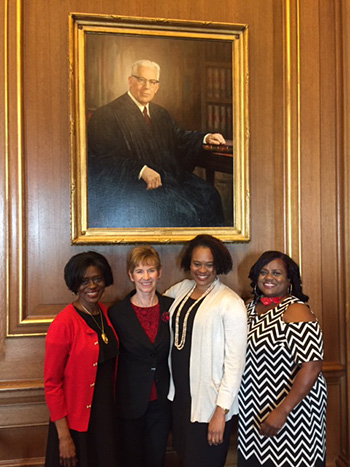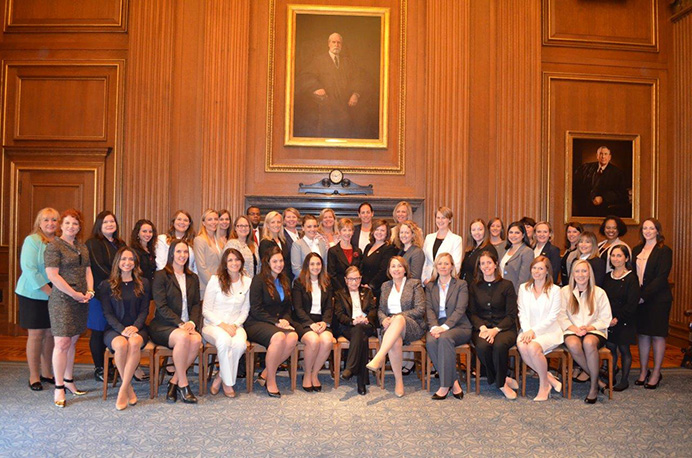Should you seek admission to practice before the Supreme Court of the United States of America?
 Every attorney dreams of practicing in the Supreme Court of the United States, right?
Every attorney dreams of practicing in the Supreme Court of the United States, right?
No?
Maybe it’s just me. Leagle eagle that I am, I have always dreamed of practicing before the Supreme Court of the United States of America.
Long before I knew I would make a career as a litigator, I was completely fascinated with the work that judges do. Imagine – when the written word (statutes or contracts) isn’t clear enough to help citizens resolve disputes on their own, our democracy has trusted the resolutions of disputes of all sizes to those it presumes to be the wisest and most studied men (and, much later, women). Of course, as a minority woman, the part of this history that most fascinated me is that these wise and studied people—these judges—have historically had a hard time seeing me as more than three-fifths of a white man. (And, I suppose, something less than half of a white woman.) I needed to understand who these people were, how they think, how they work. In law school, I sought a judicial clerkship before I sought a job at a law firm. Ultimately, I clerked for two years on the United States Court of Appeals for the Eighth Circuit, where at least some of these questions were answered. I never imagined at the time that I would enjoy being a litigator, but I still harbored a hope of visiting the Supreme Court of the United States. Over a decade later, I got my wish.
For a Justice Nerd like myself, the experience of SCOTUS admission is weighted and somewhat somber. As I walked the marble halls of the courthouse, I was keenly aware that every cause that matters to a modern black woman was argued there. My right to vote. My right to own property. My right to choose my spouse. My freedom from perpetual forced servitude. My right to an adequate education. My basic humanity—my recognition as a human being entitled to the rights set for in the Declaration of Independence. All of these issues were argued—and generally lost before they were won—in the Supreme Court of the United States.
It’s 2017, but I am just as fascinated with the work that judges do as I was as a teenaged scholar. It would be an understatement to say that I was excited about this admission ceremony. The opportunity to meet the Honorable Justice Ruth Bader Ginsberg was merely icing on the judicial cake.
I was honored to join REM chairwomen Sharon Eiseman as an admittee, and to have my mother, Clara Coleman, and my aunt/godmother, Audrey Collins Hudson, there to support me.
The experience of being sworn in to practice before the Supreme Court of the United States is available to you, too. Although Sharon and I traveled with the Womens’ Bars Association of Illinois, the ISBA offers a similar opportunity to travel to Washington, D.C. for admission every couple of years. The next ISBA trip is scheduled for the spring of 2018. The requirements for admission are not incredibly daunting – one must simply follow the instructions available at <https://www.supremecourt.gov/bar/baradmissions.aspx>. The application fee is currently $200. There is no age requirement—admission is available to any lawyer admitted to practice in one of the United States, young or old. Each applicant must identify two sponsors who have already been admitted to the SCOTUS bar. And you already know three such persons—the current REM chair, Sharon Eiseman, former REM chair Athena Taite, and your present REM newsletter editor – yours truly, Khara Coleman. If you have any questions, please do not hesitate to contact us.
In the meantime, take a look at photos from the ISBA’s 2015 SCOTUS admission trip at <https://iln.isba.org/blog/u.s.-supreme-court>, and watch out for information on the next ISBA-sponsored SCOTUS admission trip.

